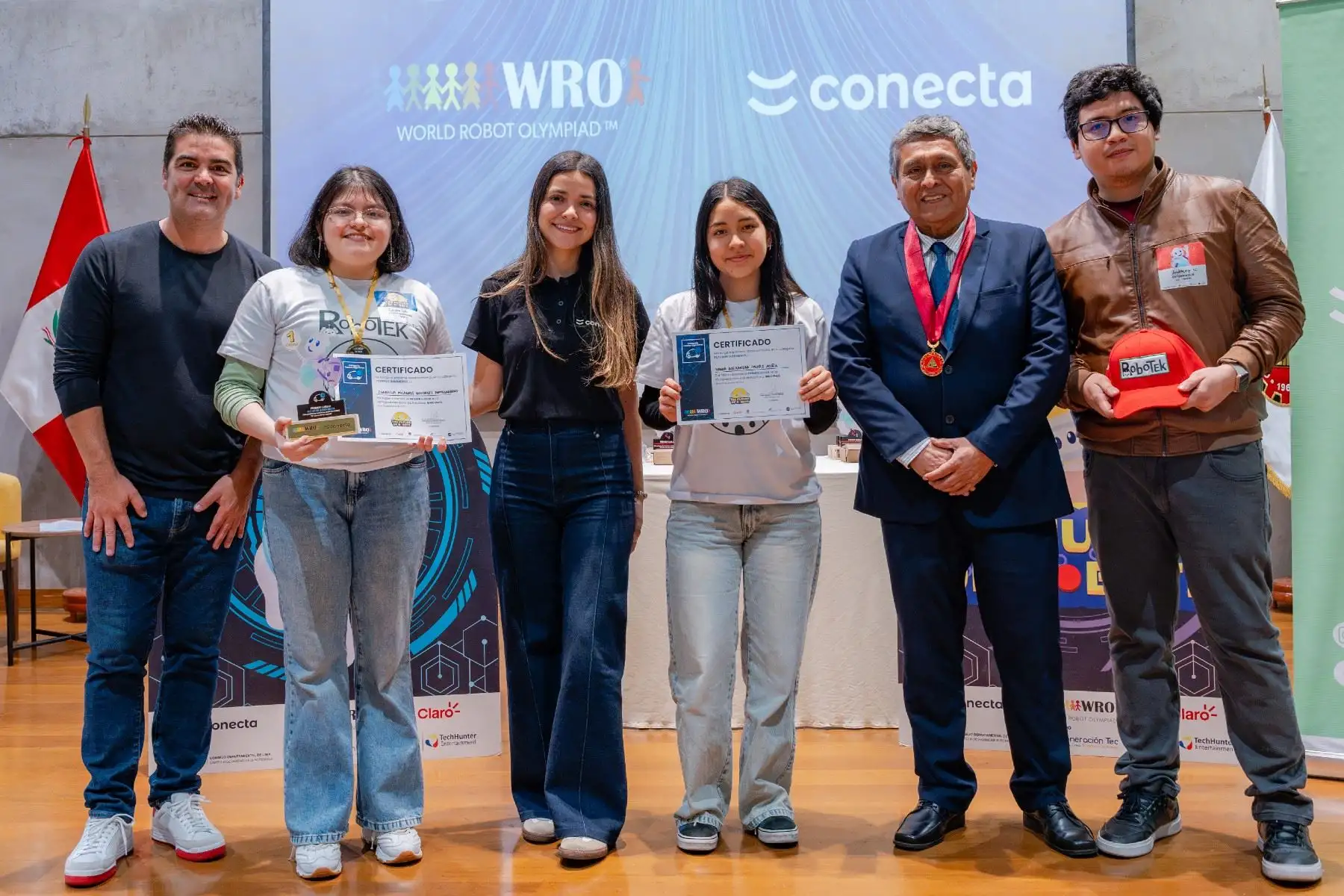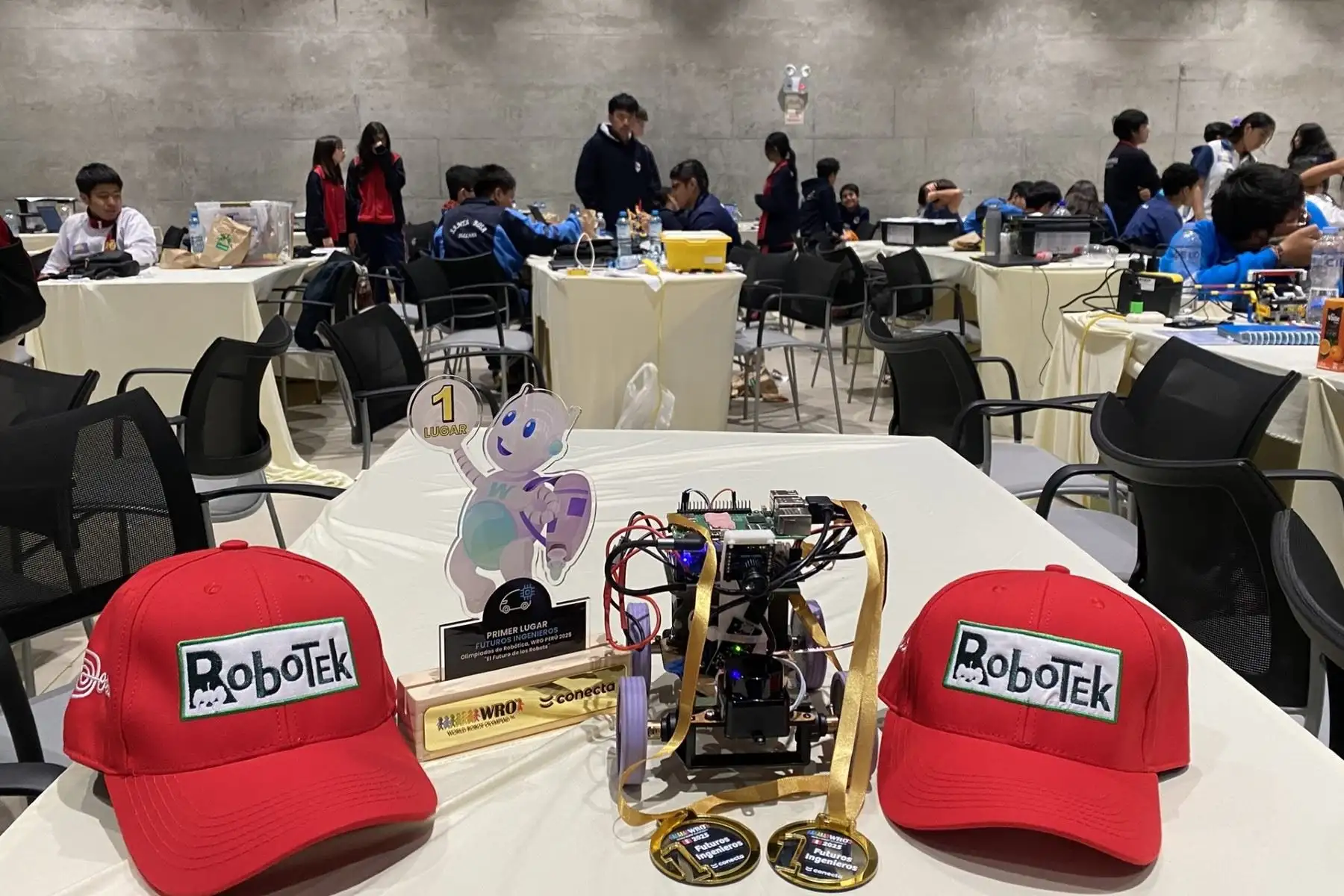Peruvian high schoolers Isabella Gonzales Portocarrero (16) and Vania Alexandra Pachas Acuña (18) qualified for the World Robot Olympiad (WRO 2025), which will take place in Singapore from November 26–28, with their invention Kyra, which is a robot that dodges obstacles as it drives through a track that changes randomly.
Team Ruwance —made up of Gonzales Portocarrero from Colegio PEAD Unidos and Pachas Acuña, a recent graduate from Nuestra Señora de la Reconciliación— took first place with their autonomous vehicle prototype, in the Future Engineers category at Peru’s National Robotics Olympiad.
The event was hosted by Conecta and Claro at the Peruvian College of Engineers.

As Peru’s representatives at WRO 2025, the students are mentored by Anthony Valladolid Ballon, a Mechatronics Engineering student at the Pontifical Catholic University of Peru (PUCP).
Valladolid has extensive experience in international competitions, including a first-place win in the satellite category at the 2023 Latin American Space Challenge.
The centerpiece of Peru’s winning project is the autonomous robot named Kyra. The vehicle was fully designed, built, and programmed to drive through a track that changes each round, all while avoiding challenging obstacles along the way.
How did they build Kyra?
Development involved constant trial and error, tweaking mechanical components, electronics, and code to achieve a nimble prototype capable of quick turns and clean evasions.
"That meant repositioning components, 3D-printing custom supports, and even manufacturing our own wheels," Pachas told Andina News Agency.
A major milestone for the team was mastering the Obstacle Challenge, where Kyra must select different routes depending on the obstacles detected. To solve the problem, the students combined computer vision techniques with autonomous path planning.
"Getting familiar with the ROS (Robot Operating System) environment was a challenge," Pachas said.
"I had previously worked with simpler systems like Arduino. Moving into something more complex pushed me out of my comfort zone, but with Isabella and Anthony’s help, I adapted quickly", she added.

Kyra runs on open-source technologies, powered by a Raspberry Pi 5 running Ubuntu and the ROS 2 framework, which breaks the robot’s code into nodes that handle separate functions and communicate during operation.
For navigation, the robot integrates a 360° LiDAR sensor, a camera, a motor, and a servo using an Ackermann steering system.
To optimize accuracy and speed, the students continuously test and fine-tune Kyra’s performance. Gonzales explained that they use a PID control algorithm to ensure the vehicle follows the track correctly.
They also calibrate the system to detect obstacle colors using the HSV format, essential when lighting conditions vary.
Currently, Team Ruwance is in an intensive improvement phase ahead of WRO 2025, focused on refining Kyra’s real-world behavior.
The global competition will put them up against teams with more advanced technology and experience. Gonzales previously competed in last year’s WRO and says that guided her strategy:
"Knowing the rules is essential. If something goes wrong and cannot be fixed, you must preserve time, the clock keeps running and that can lower your score," she noted.
She also highlighted the logistical challenge: "It’s not just building and coding once, it requires many hours. You need to be organized and willing to sacrifice other activities. International competitions also demand more investment. Last year we ran a raffle, and we’ll likely do something similar this year while looking for sponsors."
The students emphasize that, beyond robotics, the experience has strengthened their teamwork, organization, and patience, and they hope their example encourages more young people, especially girls, to join STEM fields.
For Valladolid, the mentor, supporting the team is "a chance to put theory into practice while learning from young innovators working with open-source tools." He believes these competitions push students to catch up with the latest technologies and apply them at scale, particularly in robotics and autonomous vehicles.
Team Ruwance is part of Robotek Perú, a robotics club that placed third in the WRO Americas competition in Puerto Rico in 2024 and competed in the world finals in Turkey that same year.
Six other Peruvian teams also qualified for the 2025 world championship in categories including RoboMission (Elementary, Junior, and Senior) and Future Innovators.
Regional finalists came from cities such as Sullana, Arequipa, Chiclayo, and Puno, with projects in recycling, renewable energy, and accessible technology.